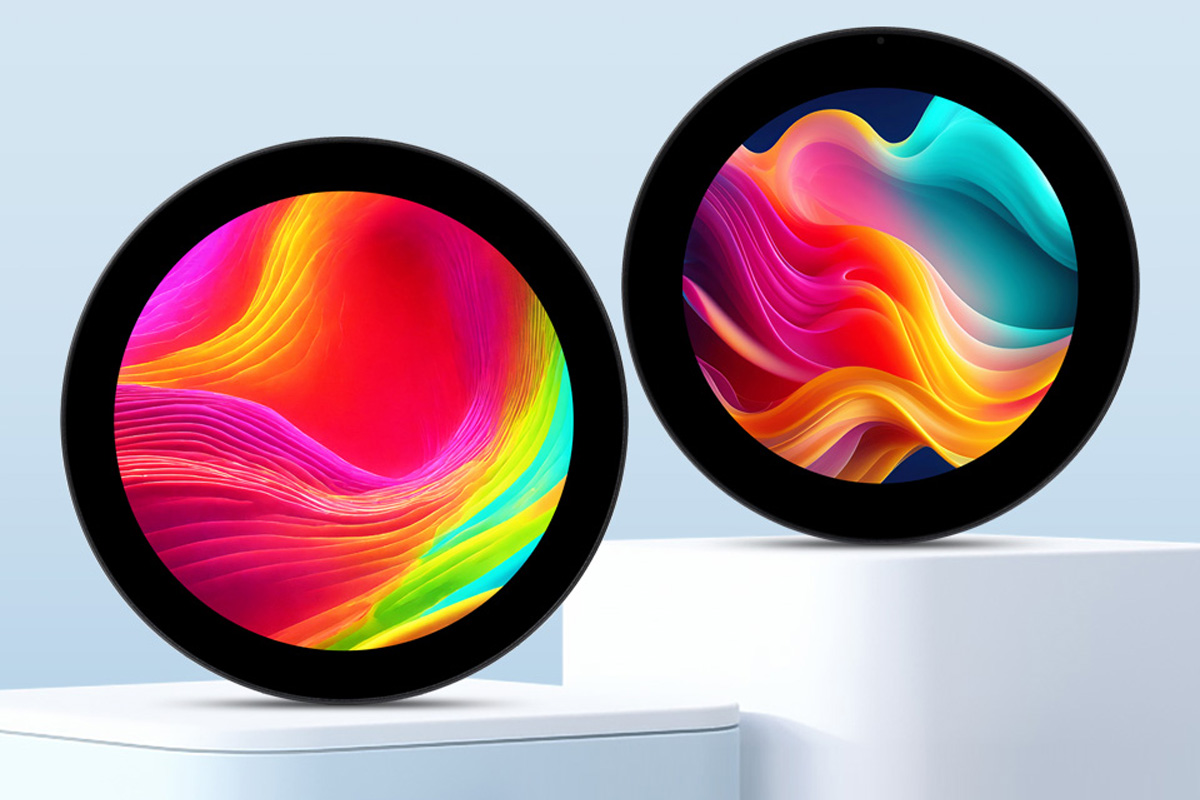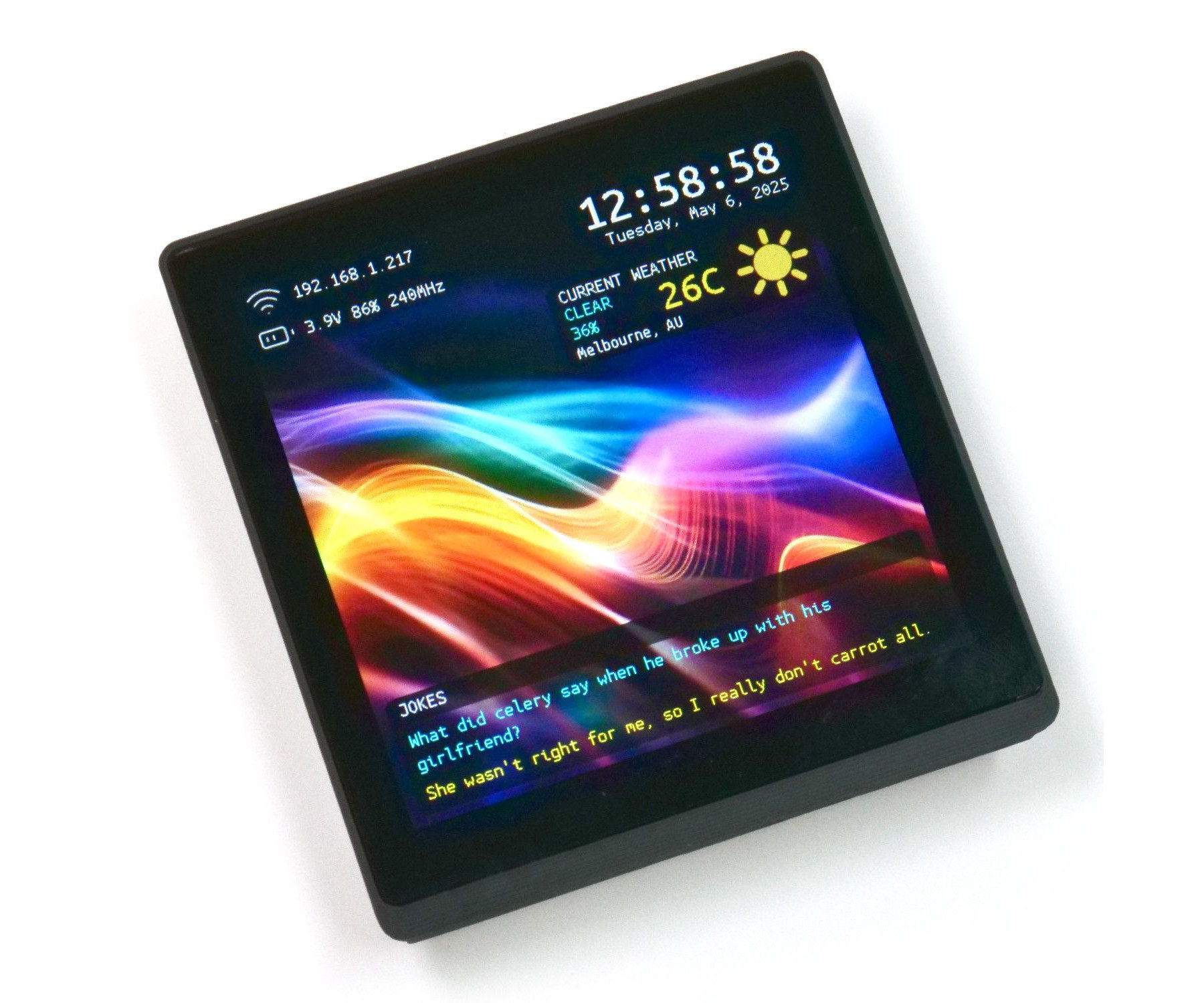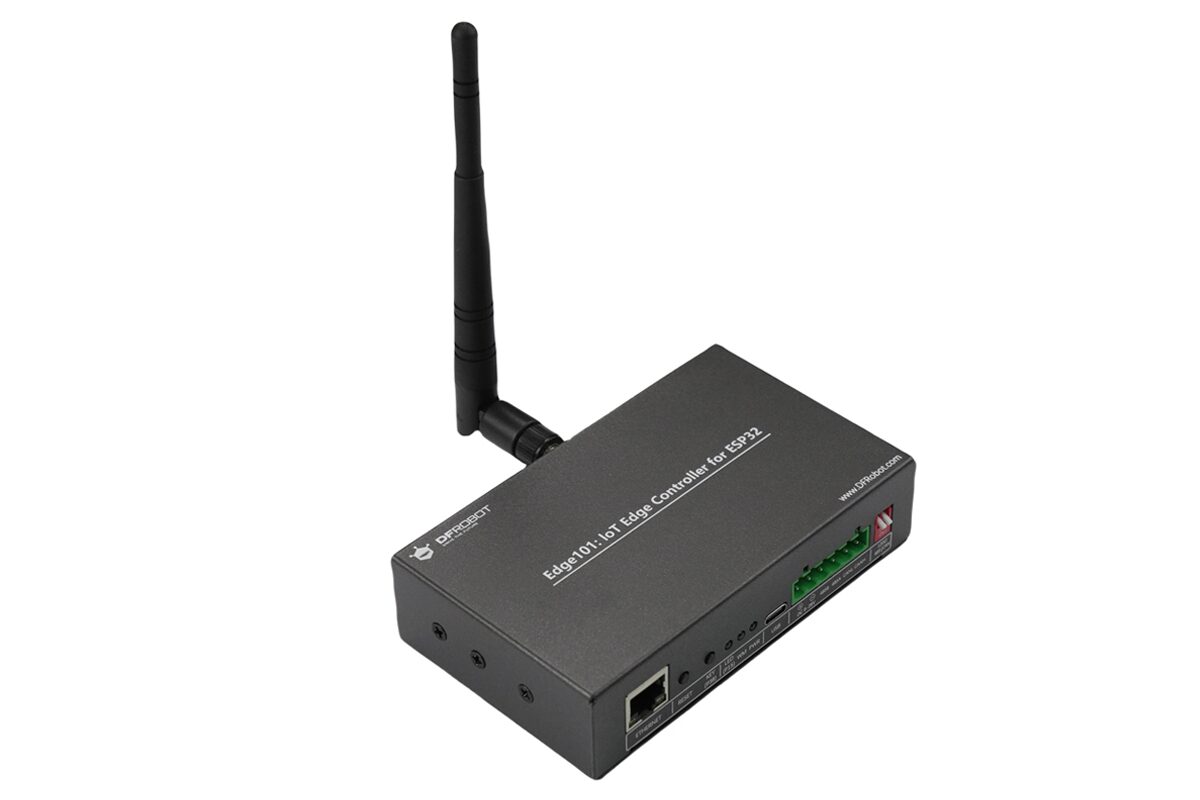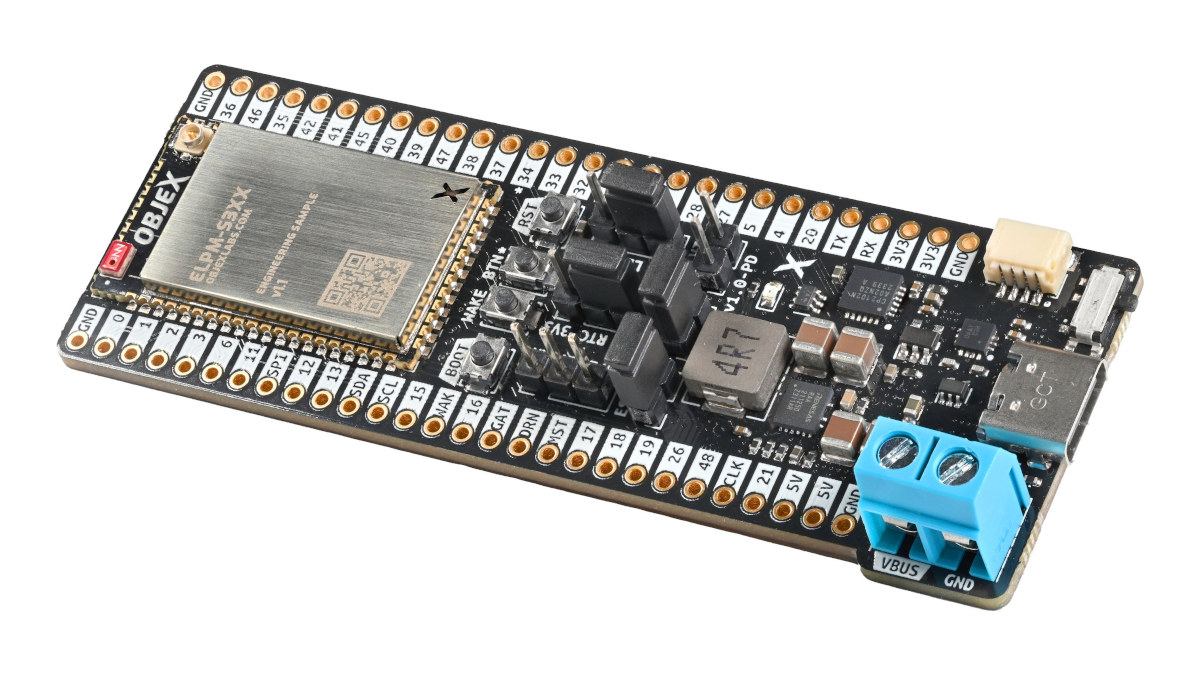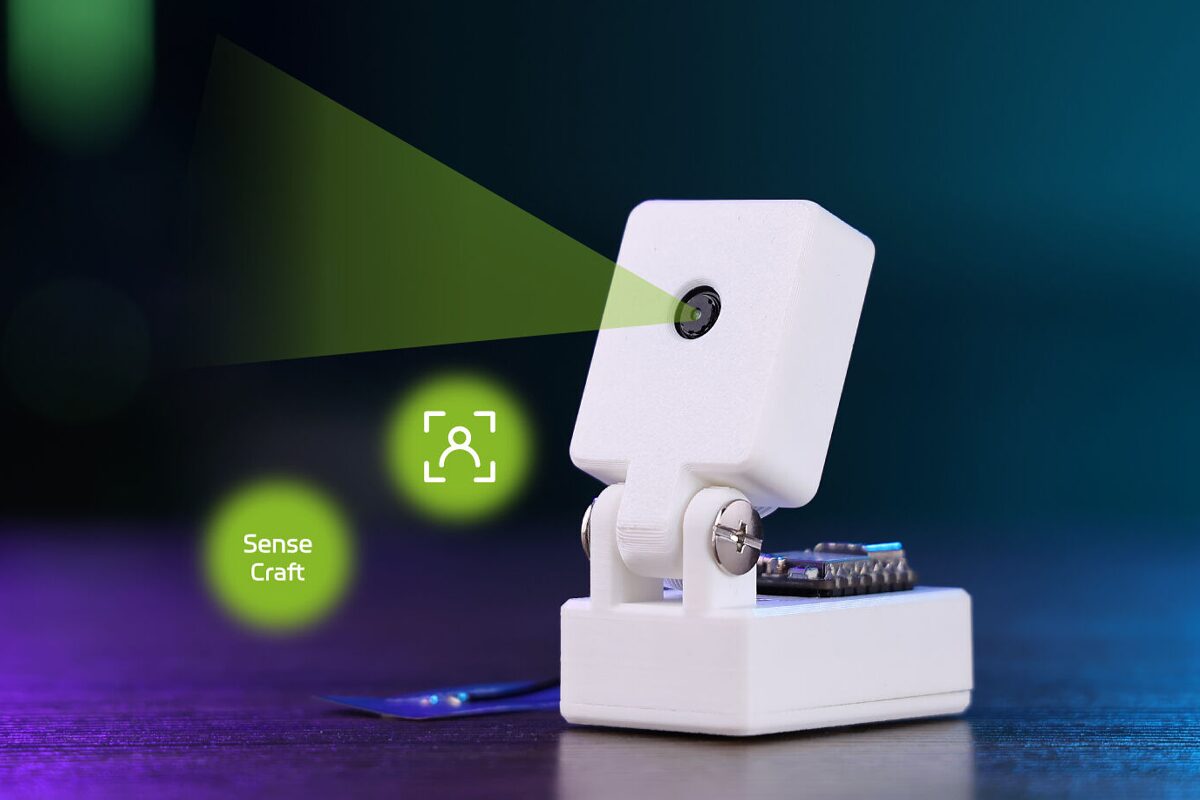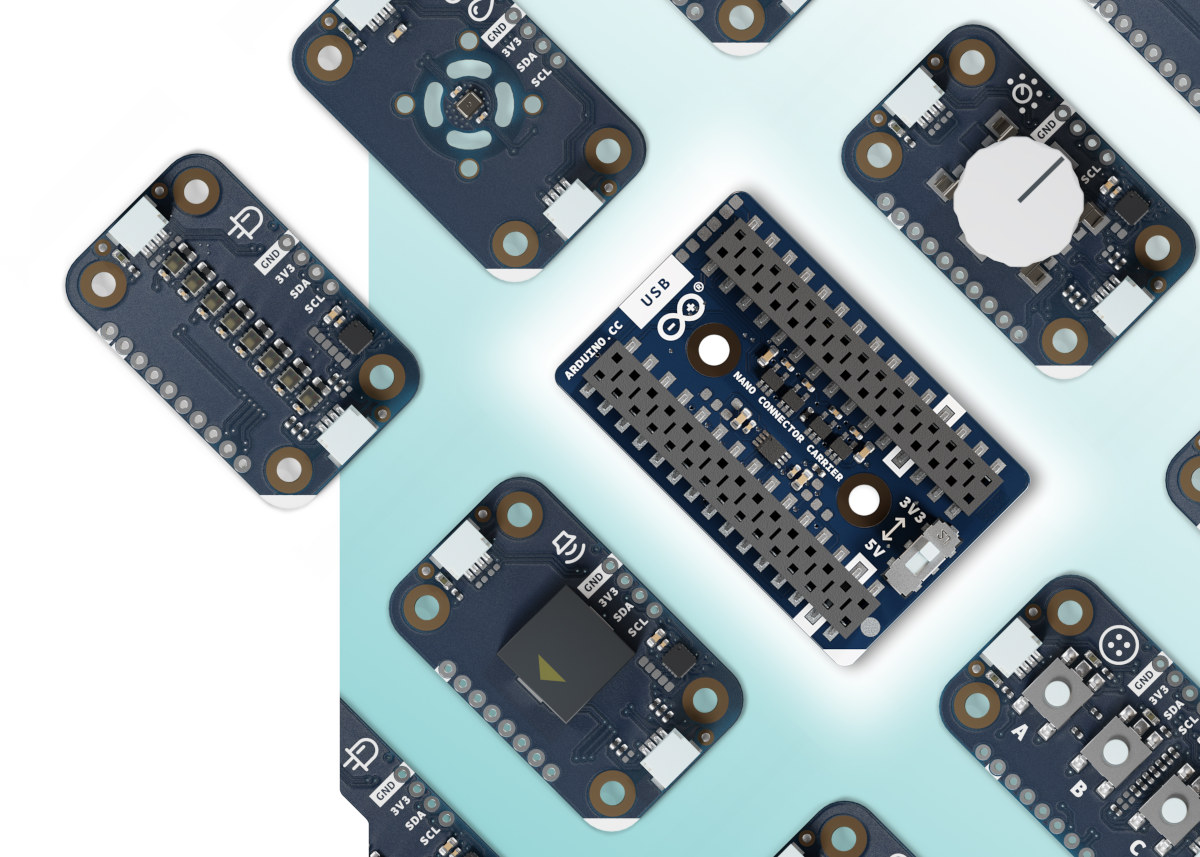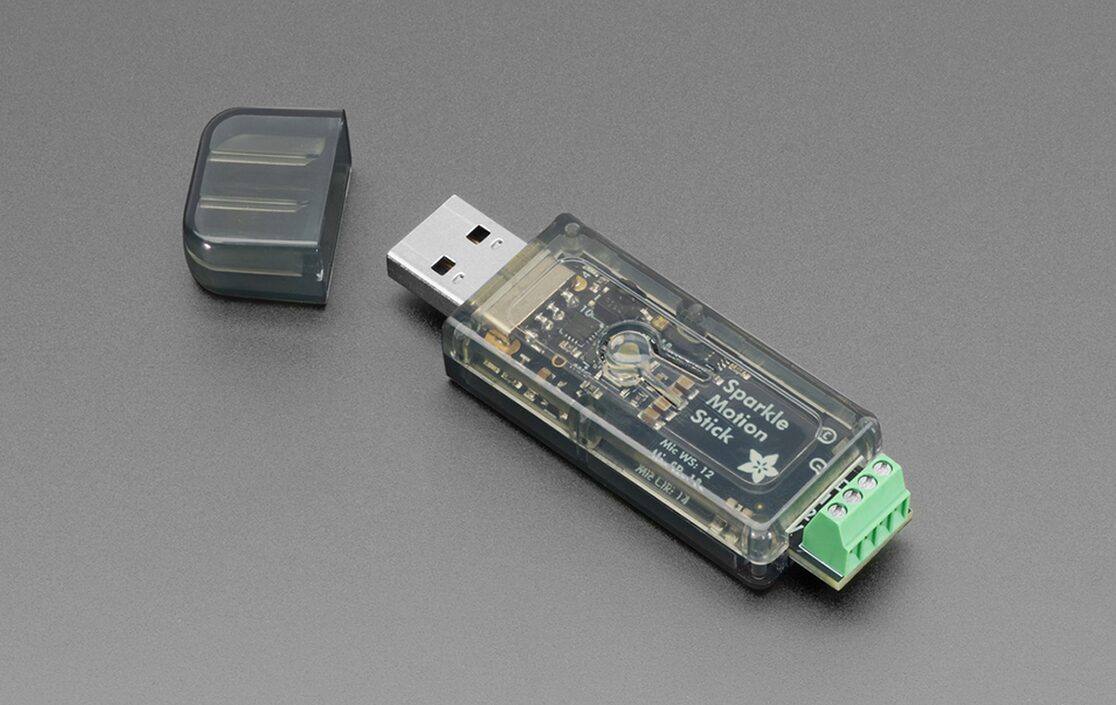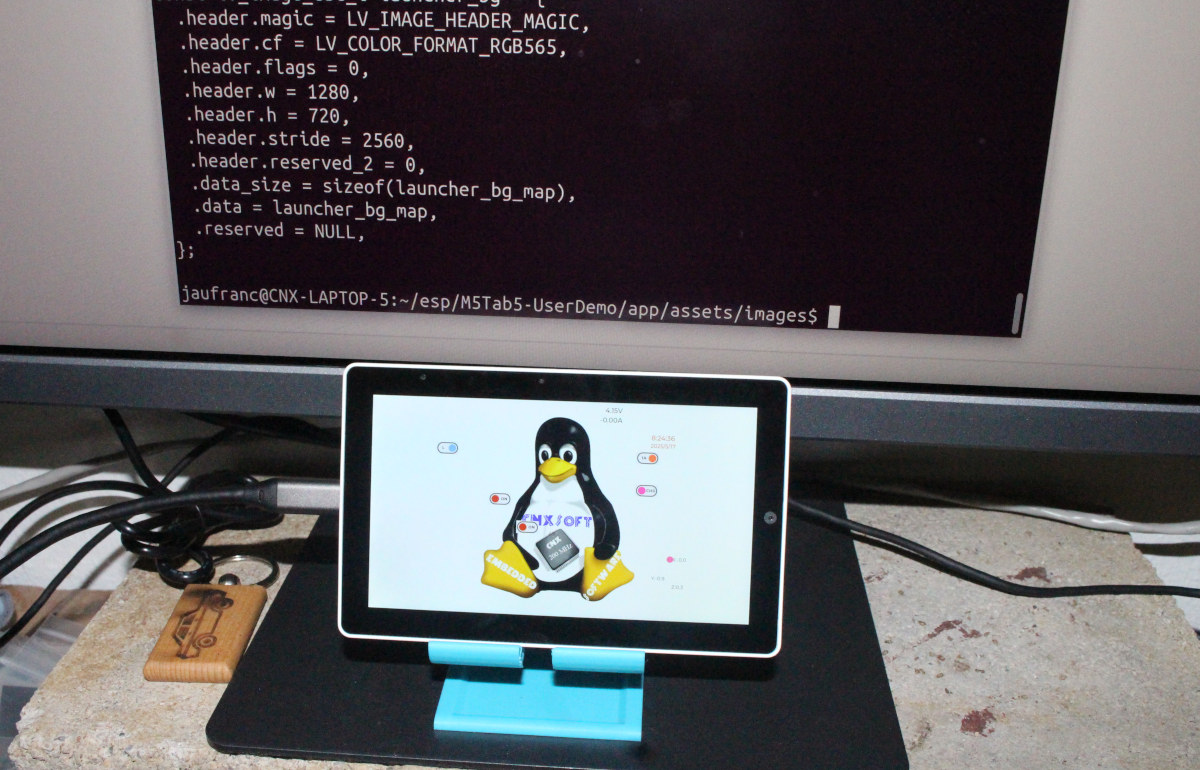Waveshare ESP32-P4-WIFI6-Touch-LCD-3.4C and ESP32-P4-WIFI6-Touch-LCD-4C ESP32-P4-based development boards feature a 3.4-inch and a 4-inch round IPS display, respectively, a 10-point capacitive touchscreen, and a wide 170° viewing angle. They also integrate two microphones with echo cancellation for voice AI applications and offer Wi-Fi 6 and Bluetooth 5 (LE) connectivity via an ESP32-C6 module. Designed for AIoT and HMI projects, the boards also include USB ports, a camera connector, a speaker connector, and a microSD card slot. Target applications include Smart Home control panels, voice-controlled interfaces, digital dashboards, indoor environmental monitoring, PC performance monitoring, and other secure IoT and edge computing applications. Waveshare ESP32-P4-WIFI6-Touch-LCD-3.4C/4C specifications Main module – ESP32-P4-Core Module Microcontroller – ESP32-P4NRW32 MCU Dual-core RISC-V microcontroller @ 400 MHz with AI instructions extension and single-precision FPU Single-RISC-V LP (Low-power) MCU core @ up to 40 MHz GPU – 2D Pixel Processing Accelerator (PPA) VPU – H.264 and JPEG codecs support Memory – […]
Battery-powered SQUiXL devkit pairs 4-inch touchscreen display with ESP32-S3 WiFi and Bluetooth SoC
Unexpected Maker’s SQUiXL is a battery-powered ESP32-S3 WiFi and Bluetooth IoT controller and development platform with a 4-inch touchscreen display with 480×480 resolution. Designed for makers, hardware engineers, embedded developers, and home automation enthusiasts, the SQUiXL integrates with 8MB PSRAM and a 16MB SPI flash for plenty of resources for the firmware. Other features include a microSD card, an amplifier with speaker connector, a haptic driver and motor, an RTC, and a STEMMA/Qt connector for expansion. SQUiXL specifications: WiSoC – Espressif Systems ESP32-S3 CPU – Dual-core Tensilica LX7 @ up to 240 MHz with vector instructions for AI acceleration Memory – 512KB RAM Wireless – 2.4 GHz WiFi 4 and Bluetooth 5.0 LE + Mesh Memory – 8MB octal PSRAM Storage 16MB QSPI flash MicroSD card slot (multiplexed with audio amplified) Display – 4-inch 480×480 RGB display with capacitive touch (GT911) Audio MAX98357A I2S Audio Amplifier (multiplexed with microSD card […]
DFRobot Edge101 ESP32 industrial IoT controller offers isolated RS485 and CAN Bus interfaces
DFRobot Edge101 is an industrial-grade IoT controller built around the ESP32 MCU, designed as a bridge between development boards and industrial IoT systems. Housed in a full metal enclosure, it comes with various protection features including surge, ESD, lightning, overvoltage, and reverse polarity protection, and supports continuous 24/7 operation in harsh environments. It integrates RS-485, CAN bus, Ethernet, Wi-Fi, Bluetooth, and RTC, and supports expansion via a PCIe slot for 4G LTE cellular communication, making it suitable for automation, environmental monitoring, and remote data acquisition in industrial or outdoor settings. The IoT controller also offers flexible mounting options such as DIN rail or ear mounting. DFRobot Edge101 specifications: Wireless MCU – Espressif Systems ESP32 CPU – Dual-core Tensilica LX6 microcontroller @ up to 240 MHz Memory – 520 KB SRAM, 16 KB RTC SRAM Wireless – WiFi 4 and Bluetooth 4.2 Storage – 4MB SPI NOR flash, MicroSD card slot Connectivity […]
OBJEX Link S3LW ultra-low-power ESP32-S3 LoRaWAN board takes up to 100W power input
OBJEX Link S3LW is a small development board based on the ultra-low-power ELPM-S3LW module with ESP32-S3 MCU and LoRaWAN connectivity and the ability to take 100W input via USB-C or a 2-pin terminal block for driving motors, controlling RGB LED strips, and other high-power projects. It’s compliant with the USB PD standard, features two 28-pin headers and a STEMMA I2C connector for expansion, as well as a built-in CP2102/CP2104 USB to serial bridge for debugging, and a few buttons. The company also offers an OBJEX ELPM-S3 module and OBJEX Link S3 board with the same features, minus LoRa/LoRaWAN support. OBJEX Link S3LW specifications: Wireless module ELPM-S3LW v1.2 Wireless SoC – ESP32-S3FN8 CPU – Dual-core 32-bit Xtensa LX7 microcontroller with AI vector instructions up to 240MHz, RISC-V ULP co-processor Memory – 512KB SRAM Storage – 8MB flash Wireless – 2.4GHz WiFi 4 (802.11b/g/n), Bluetooth 5.0 BLE + Mesh LoRa support LoRa […]
XIAO Vision AI Camera combines ESP32-C3 and WiseEye2 HX6538 AI MCU with 5MP camera, supports SenseCraft no-code platform
Seeed Studio has recently released the XIAO Vision AI Camera, a compact, open-source smart ESP32-C3 AI Camera that integrates the Grove Vision AI Module V2, a XIAO ESP32C3 module, and an OV5647 5MP camera in a custom 3D-printed PLA case. One of the key components of the camera module is the WiseEye2 HX6538 chip, which features dual-core Arm Cortex-M55 processors and an Ethos-U55 NPU for edge AI computing. It also comes with Wi-Fi connectivity, turning it into an intelligent IP camera that easily integrates with Home Assistant for closed-loop automation (e.g., object detection triggering lights or alerts). Its 5MP OV5647 camera can record 1080p@30fps video and has adjustable focus. These features make this camera useful for industrial automation, smart cities, transportation monitoring, intelligent agriculture, and mobile IoT devices. XIAO Vision AI Camera Specifications Main MCU module – XIAO ESP32C3 SoC – Expressif Systems ESP32-C3 CPU – Single-core RISC-V microcontroller @ […]
Arduino launches Nano Connector Carrier and seven Modulino expansion nodes
The Arduino Nano Connector Carrier is a compact add-on board designed for the Arduino Nano boards to allow easy connection to Qwiic, Grove, and Modulino expansion modules. The company also announced seven new Modulino nodes that are available individually for user input (e.g. button, knob), sensors (IMU, ToF), audio output, and a short RGB LED strip. Arduino Nano Connector Carrier specifications: Storage – MicroSD card reader (SPI) Expansion Interfaces 4x Grove analog/digital I/O connectors – 2x analog, 1x I2C, 1x UART Qwicc I2C connector Double female board header for Arduino Nano series boards I/O Voltage – Switch between 3.3V and 5V Dimensions – 43 x 28 mm The board works with Seeed Studio Grove modules and Arduino Modulino nodes connected over the Qwicc connector: Modulino Knob – a rotary encoder with push button Modulino Pixels – 8x addressable RGB LEDs Modulino Distance – a time-of-flight (ToF) sensor to measure proximity […]
Adafruit Sparkle Motion Stick – A compact ESP32-S3 USB WLED controller board with dual 5V LED outputs, an I2S Mic, and a snap-fit enclosure
Adafruit has recently released the Adafruit Sparkle Motion Stick, a compact, WLED-friendly Neopixel USB controller board built around an ESP32-S3 Module designed for audio-reactive LED projects, cosplay props, holiday lighting, and more. The module comes with a USB Type-A port for programming and power input (5V, 2A max), and a simple enclosure for protection (not weatherproof). It includes a built-in I2S microphone for audio-reactive effects, an IR receiver for remote control. Other than that it has a user-programmable button, an onboard NeoPixel LED, and a red status LED with two 5V-level shifted signal outputs with power and to connect the LEDs a screw terminal blocks. Adafruit Sparkle Motion Stick specifications SoC – ESP32-S3 dual-core Xtensa LX7 MCU @ 240MHz with 2.4GHz Wi-Fi and BLE 5 LED Control – 2x level-shifted output channels (5V logic) with terminal blocks (26–20AWG support) Audio Input – Built-in I2S MEMS digital microphone for audio-reactive lighting Infrared […]
M5Stack Tab5 Review – Part 2: Getting started with ESP32-P4 firmware development using the ESP-IDF Framework and Arduino IDE
In the first part of the review, we checked out the hardware of the M5Stack Tab5 ESP32-P4 IoT development kit and tried the demo firmware, whose user interface allows the user to quickly experiment with the camera, microphone, speaker, WiFi, power consumption, GPIOs, RS485, and more. Since there’s no user application for the Tab5 at this stage, I decided to look into software development resources for the ESP32-P4 devkit in the second part of the review. I’ll first follow the instructions to build the demo firmware from source using the ESP-IDF framework, then analyze key aspects of the source and make some small modifications. After that, I’ll have a look at ESP32-P4 Arduino support via M5Unified and M5GFX library. ESP-IDF 5.4.1 installation and ESP32-P4 Hello World program The first step is to get the ESP-IDF 5.4.1 and configure ESP32-P4 following the instructions on the Espressif website, before testing it with […]


